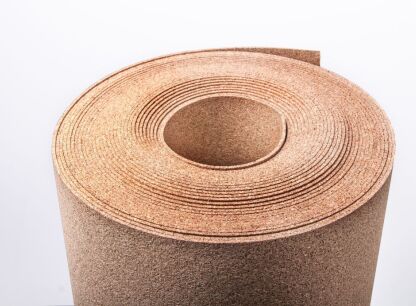
Rolled cork is the basis for many applications in both homes and commercial spaces. Thanks to the variety of thicknesses - from 0,8mm to 10mm - our cork rolls offer not only excellent insulating and acoustic properties, but are also extremely easy to install. Regardless of whether you are looking for subtle 2mm cork roll or 10mm cork roll, our products are ideal for soundproofing walls, creating effective boards for pinning information or as decorative cork formats.